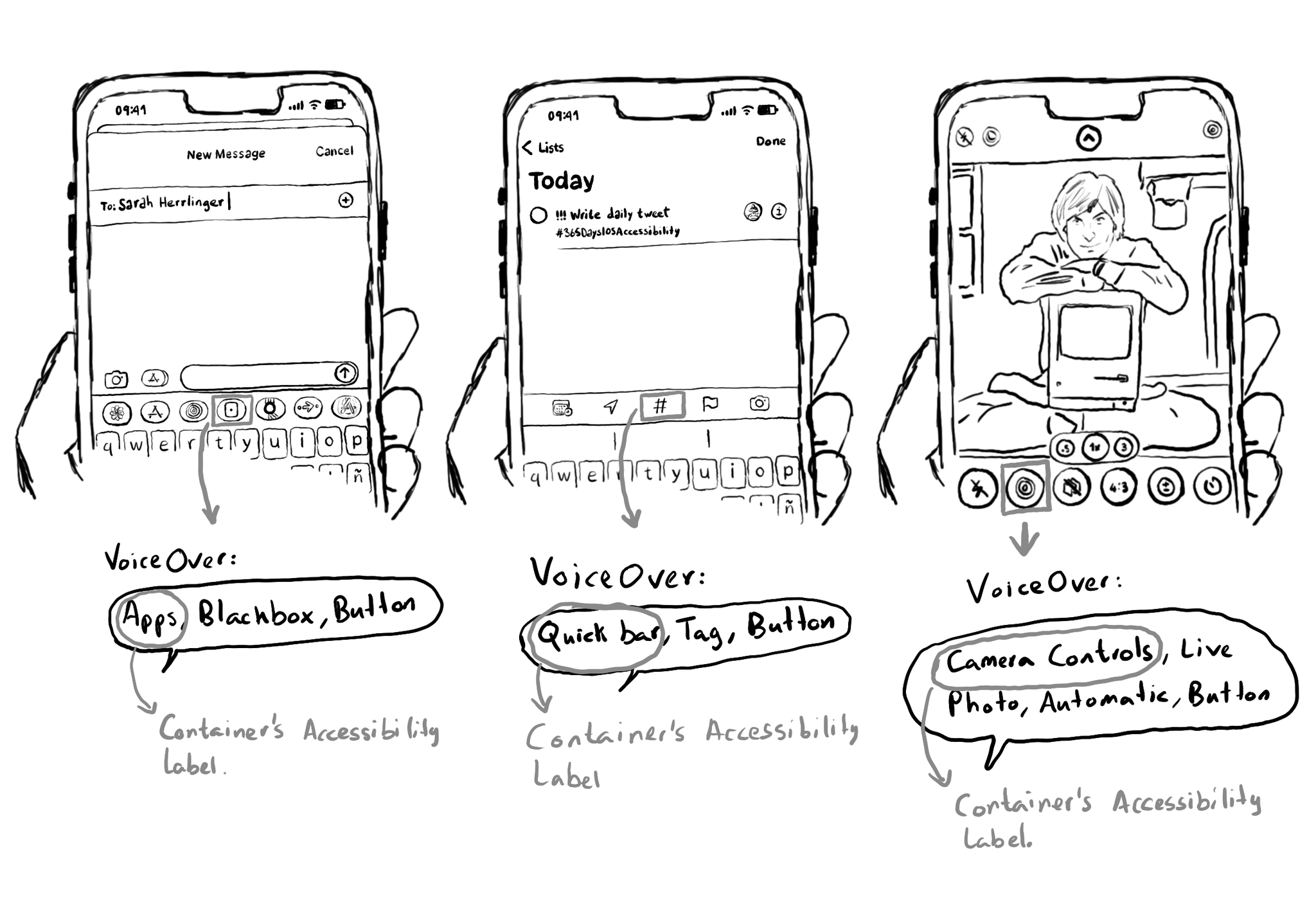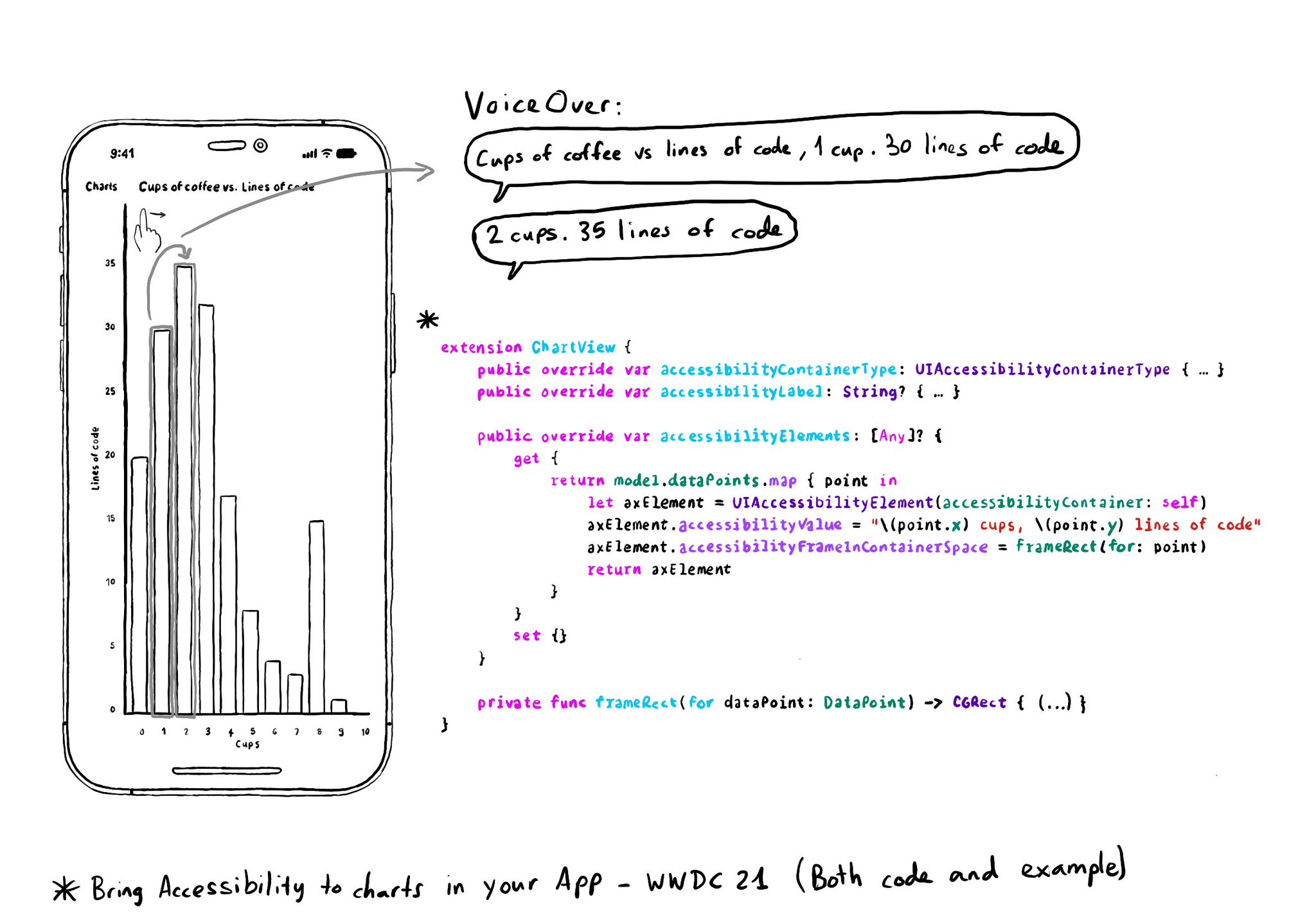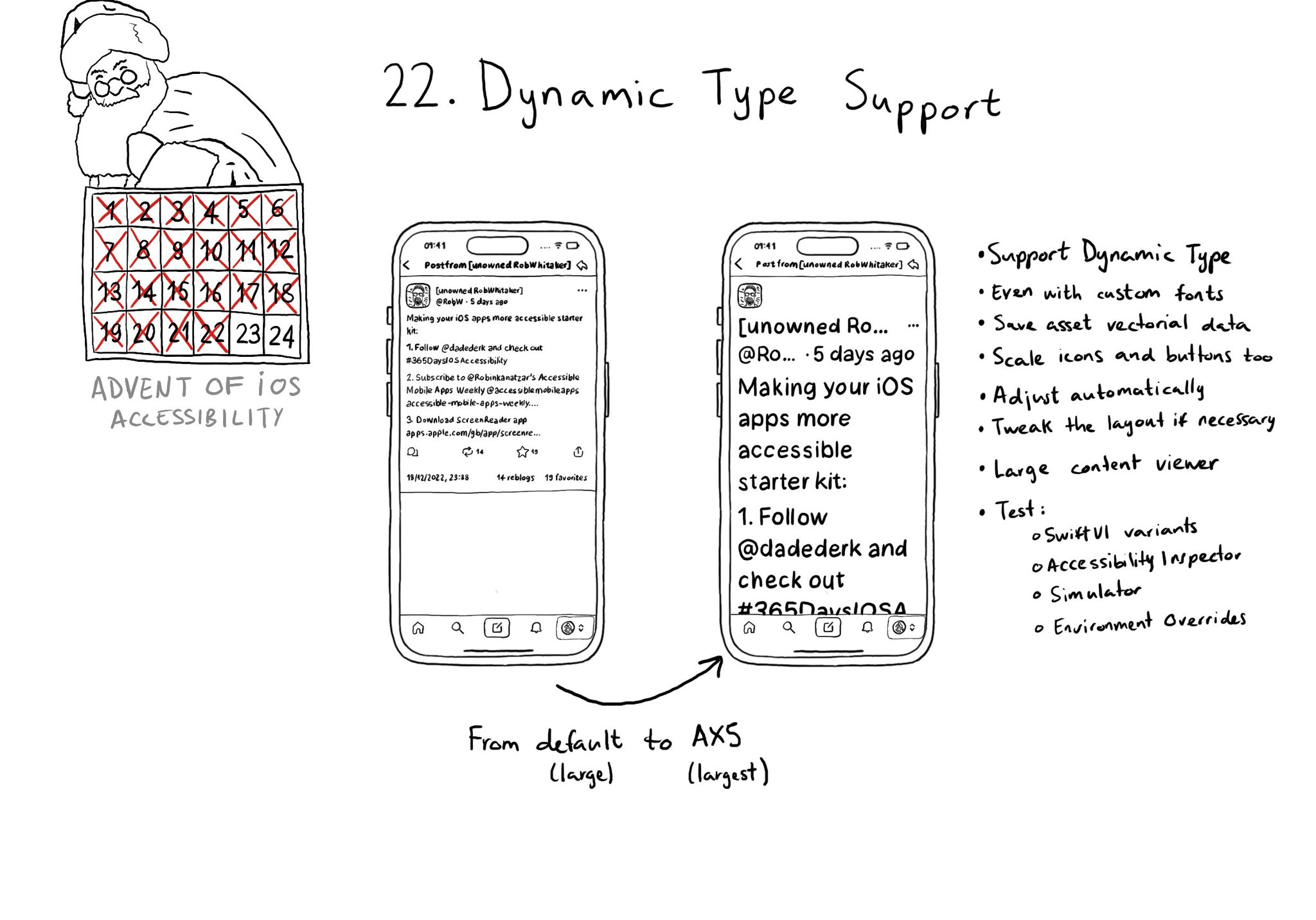Here's a few examples where Apple seems to use the semanticGroup accessibilityContainerType, other than for the tab bar and toolbar, to serve for inspiration on when it might be useful in your own apps.

Reminder that this configuration causes for VoiceOver to announce the accessibility label of the container view, before what it would normally announce for an element, only when the focus moves from outside to inside the container.
You may also find interesting...

Creating UIAccessibilityElements, combined with a semanticGroup accessibilityContainerType, can also help you make components as complex as charts accessible. Example from "Bring Accessibility to Charts" WWDC21: https://developer.apple.com/videos/play/wwdc2021/10122/
UINotificationFeedbackGenerator has a “success” feedback type. Consider using it when a task was performed successfully together with any other visuals or sound. The use of multiple modes just makes it easier for everyone to understand your app.

Make sure you support Dynamic Type up to the largest text size available. Take into account that there are five extra accessibility sizes available from the Accessibility Settings. It can make a huge difference for lots of users.